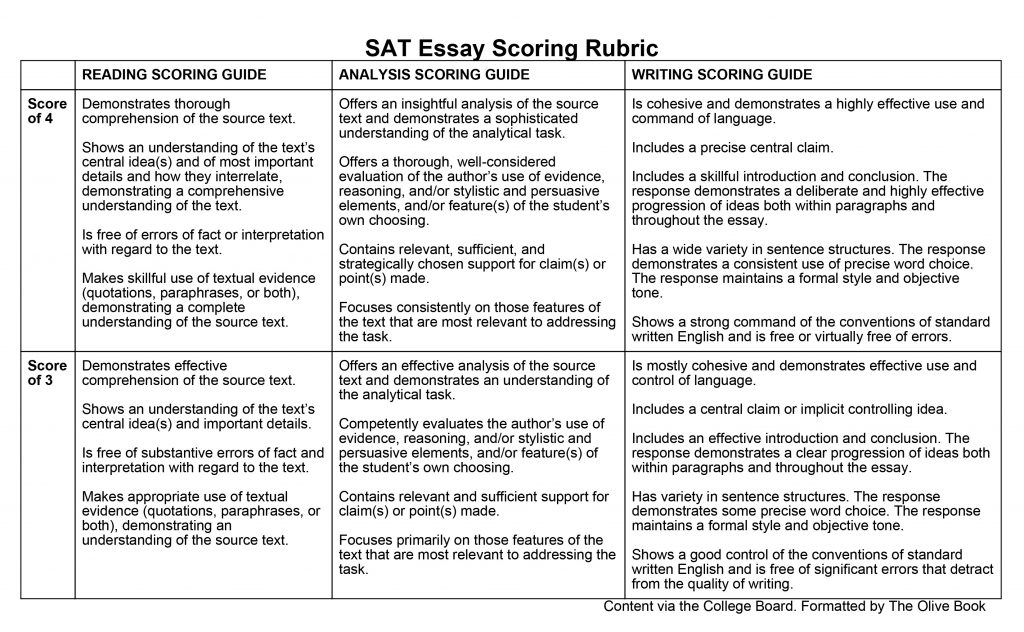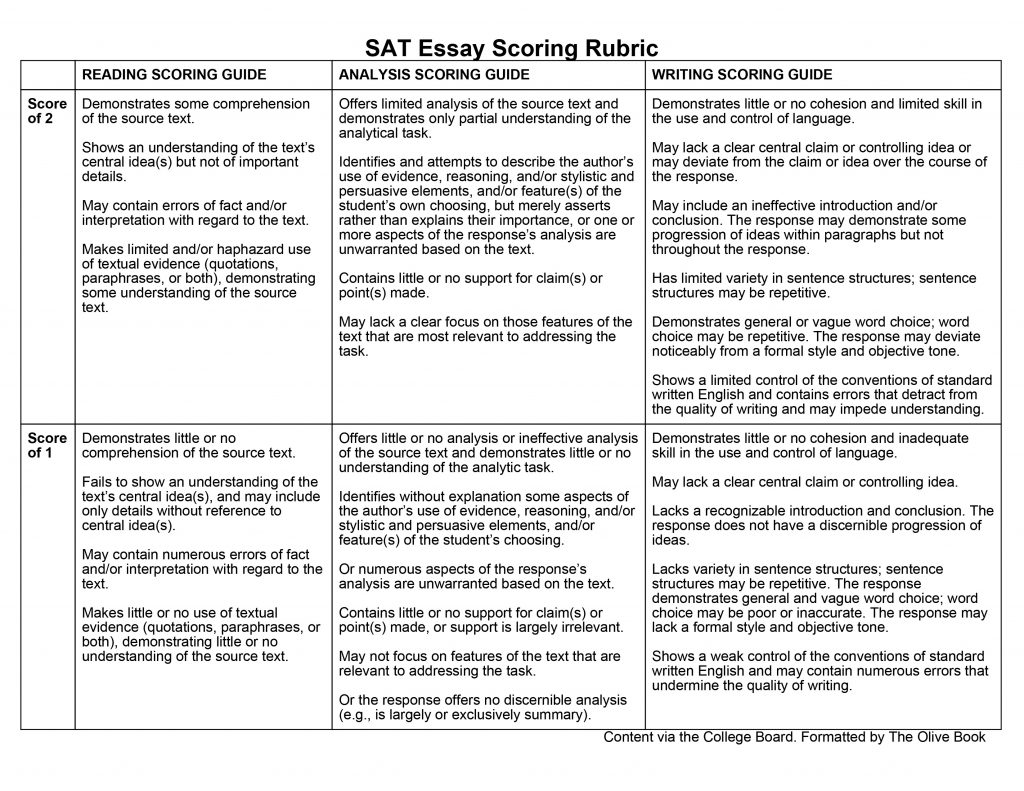If you decide to take the SAT Essay section, don’t skip out on prep. Arm yourself with tips for the SAT Essay section and take a look at the SAT Essay rubric to see how graders score your essay!
Strategies for the SAT Writing and Language Section
Should I Take the SAT Essay Section?
Before you decide to take the optional SAT Essay during the SAT test, check with the colleges you’re interested in to see if they require the Essay section – many do not, and you may not need to take the Essay after all! If you are unsure of the colleges you’re going to apply to, it may be wise to take the Essay section so you don’t have to come back another day to take it.
What are the Details?
Timing of the Essay Section
You have 50 minutes to read the passage/prompt then plan and write your essay.
The Prompt
The prompt is a passage that is roughly as long as the longest passage from the Reading Section. The passage can cover any topic, but it always presents an argument.
Every prompt will have the following elements:
As you read the passage below, consider how [the author] uses:
evidence, such as facts or examples, to support claims.
reasoning to develop ideas and to connect claims and evidence.
stylistic or persuasive elements, such as word choice or appeals to emotion, to add power to the ideas expressed.
[…passage…]
Write an essay in which you explain how [the author] builds an argument to persuade his or her audience that [summary of the argument in the passage]. In your essay, analyze how [the author] uses one or more of the features in the directions that precede the passage (or features of your own choice) to strengthen the logic and persuasiveness of his argument. Be sure that your analysis focuses on the most relevant features of the passage.
Your essay should not explain whether you agree with [the author’s] claims, but rather explain how [the author] builds an argument to persuade his or her audience.
How is the Essay Section Scored?
Two different people will read and score your essay. Each scorer awards 1–4 points for each dimension: reading, analysis, and writing, so you’ll receive three scores for the SAT Essay—one for each dimension—ranging from 2–8 points.
Then the two scores for each dimension are added. There is no composite SAT Essay score (the three scores are not added together) and there are no percentiles.
SAT Essay Scoring Rubric


To Score High in the Reading Category…
The Reading score reflects how well you understood the passage, the main idea as well as the nuances of the argument presented, and how well you made use of the text through quotations and paraphrasing within your essay. Students usually fall short when they oversimplify the author’s argument or have a limited understanding of the elements the author uses to build the argument. Another difficult task is finding a balance between using too many or too few quotations from the passage, sufficiently explaining a quotation, and ensuring any references to the passage are accurately used in your essay.
“Students usually fall short when they oversimplify the author’s argument or have a limited understanding of the elements the author uses to build the argument.”
To Score High in the Analysis Category…
The Analysis score is based on your ability to explain how the author built his or her argument and the ways in which the argument is and is not effective. Students usually fall short when they fail to explain how a particular rhetorical device (word choice, parallel structure, emotional appeals, use of data and evidence, anecdotes, etc.) contributes or detracts from the efficacy of the argument. In your essay, you must explain how the author’s use of these elements connects with the reader and convinces the reader of his or her position.
“In your essay, you must explain how the author’s use of rhetorical devices connects with the reader and convinces the reader of his or her position.”
To Score High in the Writing Category…
The Writing score reflects how skillfully the response was crafted. Your essay must have a deliberate structure and style and be free from grammatical errors. You want your essay to sound like a polished, logical, thoughtful, best version of you. Students usually fall short when they fail to plan their essays. Many students think that given the limited time, they are better off using all of their time to write. However, the time you spend planning ensures that your writing time is more efficient and better organized. Students can also fall short when they rush through the writing believing there will be plenty of time at the end to review and edit. Instead, you want to write, re-read, and quickly edit each paragraph as you go. You will find it is easier to fix small mistakes and clarify examples while your ideas are fresh.
“Your essay must have a deliberate structure and style and be free from grammatical errors. You want your essay to sound like a polished, logical, thoughtful, best version of you.”
How Do You Study for the SAT Essay?
Studying for the SAT essay is simple: just practice!
Even just writing one essay can prepare you for this section, but it would be better if you have time to write two practice essays! The first one would give you a sense of the tasks: what aspects are more challenging than you thought, where did you spend the majority of your time, did you plan your essay well. Then the second essay allows you to learn from your mistakes and write a better essay. This way you can enter the test knowing you can write a strong essay!
How to Structure Your Essay
A basic essay structure can help you craft a great essay on test day. Here’s the essay structure we recommend to students:
Introduction
Clearly define the two or three elements used by the author to build the argument – this is your thesis statement.
Body Paragraph 1
Give specific evidence/support of your first element – what examples, quotations, references from the passage can you use to prove your logic?
Remember not to just throw out examples and keep moving! You have to show how the author’s use of these elements connects with the reader and convinces the reader.
Body Paragraph 2
Give specific evidence/support of your second element – what examples, quotations, references from the passage can you use to prove your logic?
Avoid saying phrases like, “it is clear, “ or “obviously…” You have to make your argument clear, not just say it is.
Body Paragraph 3
If you have time, then give your last element. Though often you will be describing how the author effectively builds the argument, if you can, offer an instance in which the element used by the author was less effective.
Conclusion
Make sure to save time for a conclusion, even if it is short.
If you didn’t have time for a Body 3 paragraph, then you can quickly throw out an instance in which an element used by the author was less effective as a way to wrap up the essay.
Be sure to restate the topic and your perspective.
Though it may feel constrictive to write in such a structured way, the good stuff is really what you say in the body paragraphs. The structure just helps you to stay on topic and complete the essay tasks. Remember, you must explain how the author’s use of these elements connects with the reader and convinces the reader of his or her position.
In Conclusion…
(Always include a conclusion!)
Study for the SAT Essay section and do your best on test day, but keep in mind that your Common Application essay or your college application essay is way more important. No one sees your SAT essay but the graders!
For more Essay strategies and practice, enroll in our online SAT course at www.olive-book.com.
